Want to know about list of 10 Sikh gurus name in order ? Well you have landed on the right article . Sikh is derived from the Sanskrit word meaning disciple. Sikhism began from the birth of Guru Nanak Dev in 1469 to the human form of Guru Gobind Singh in 1708.
After his demise, Guru Granth Sahib was considered the word of God and kept in the Gurudwara.Teachings of Guru Nanak Dev have been included in Granth Sahib. Guru Nanak Dev emphasized on equality of women.
Guru Angad formed many schools and emphasized education. Guru Amardas fought against caste prejudice. Guru Ramdas taught about the importance of celebrating together.
Guru Arjan Dev prepared shelter for the needy ones. Guru Har Gobind transformed Sikhs into a military community. Guru Har Rai taught the disciples to care about nature. Guru Har Krishan was the youngest Sikh guru and taught the devotees to care for smallpox and typhoid victims.
Guru Tegh Bahadur taught the disciples to fight for the right to freedom. Guru Gobind Singh was the last human Sikh guru who introduced Khalsa Panth.
List of 10 Sikh Gurus Names In Order
1. Guru Nanak (1469-1539)
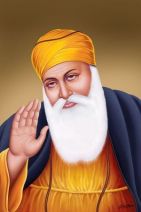
Guru Nanak, the founder of Sikhism was born in 1469, in Nankana Sahib (Pakistan).
He became the guru at the age of around 30 years. He taught about the oneness of God, and humanity.
He started the guru ka langar referring to a community kitchen, serving free food to everyone without any discrimination of caste, creed, color, or gender.
He offered that salvation can be reached through disciplined meditation in the name of the divine.
5 teachings of Guru Nanak Dev were Vand Chhako (sharing is caring), Kirat Karo (live an honest life), Naam Japo (chant the name of the god), Sewa (selfless service), and Sarbat Da Bhala (welfare of everyone).
His disciple, Guru Angad was chosen as his successor.
Details
2. Guru Angad Dev (1504 -1552)
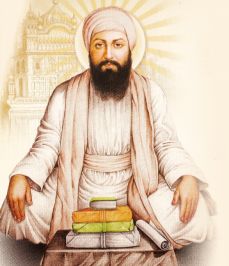
He was born on March 31, 1504, in Amritsar, Punjab.
Guru Angad Dev (birth name Lehna) was announced as the successor of Guru Nanak Dev on 13 June 1539 when he was 35 years old.
He created the written form of the Punjabi language, termed Gurmukhi, and emphasis on teaching the youth this language.
His 63 slokas and shabads have been registered in Guru Granth Sahib.
He started Mall Akhara (a form of physical and spiritual exercise). Guru Angad Dev maintained the langar system started by Guru Nanak Dev.
He emphasized selfless service to humanity (nishkam Sewa), disapproval of hypocrisy, and complete surrender to god.
Details
3. Guru Amar Das (1479-1574)
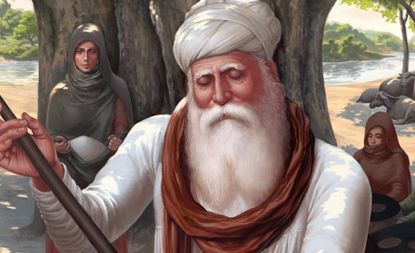
He was born on 23 May 1479 near Amritsar, Punjab. Guru Amar Das was considered Guru at the age of 78 after the demise of Guru Angad Dev.
He aimed to abolish the caste system and upliftment by prohibiting the sati, and parda systems.
He also encouraged widow remarriage. Guru Amardas started the system of the Sikh marriage ceremony, termed Nanad Karaj.
He also started a management system for the Sikh community named Piri for women and maji for women.
Guru Amar Das gave Anand Sahib (gift of prayer) to be recited by the Sikh devotees daily. Under his administration, all the visitors to gurudwara were first offered langar before meeting the guru.
Details
4. Guru Ram Das (1534-1581)
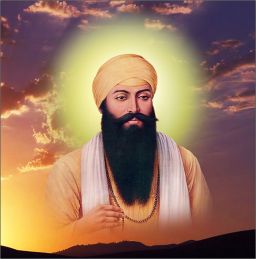
He was born on 9 October 1581 in Lahore (now part of Pakistan).
He was appointed as the fourth guru at the age of 40 years.
Guru Ram Das designed the Golden Temple, a pilgrimage of Sikh devotees.
He is the author of hymns of the marriage rites called Laava.
Guru Ram Das planned the township of Ramdaspur (the abode of Ram Das) in 1577, later called Amritsar.
He wrote 688 hymns that were included in Guru Granth Sahib.
4 stanza hymns recited during the Anand Karaj ceremony were composed by Guru Ram Das.
Details
5. Guru Arjan Dev (1563-1606)
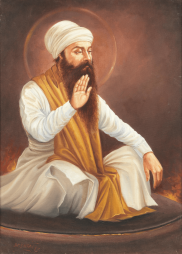
He was born on May 2, 1563, in Govindval, Punjab. Guru Arjan Dev was appointed as the fifth guru at the young age of 18 years.
He compiled the hymns composed by previous gurus in Adi Granth (the foundation of Guru Granth Sahib).
Guru Arjan Dev was the author of Sukhmani Sahib (prayer for peace).
He finished the construction of the Golden temple and developed Amritsar city.
He also started the Masand system (representing gurus at far-flung places ) and the Dasvand system (donating a tenth of income for langar).
Guru Arjan Dev was the first Sikh guru to be martyred on the orders of Mughal emperor Jahangir.
Details
6. Guru Hargobind (1595-1644)
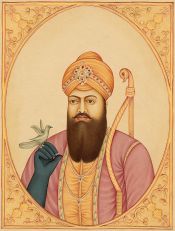
He was born on 19 June 1595 in Amritsar, Punjab.
Guru Hargobind was appointed as the sixth guru at the tender age of 11 years.
He founded Kartarpur city in Punjab. He kept two swords, Miri, and Piri representing temporal power, and spiritual power, respectively.
Guru Hargobind built Lohagarh (Fortress of Steel) in Amritsar to arm and train the devotees in martial arts, and weapons after the tortures forced by Guru Arjan Dev.
He organized an army to protect the weaker and needy people.
He constructed God's throne in front of Harminder Sahib, termed Akal Takht in 1608.
Details
7. Guru Har Rai (1630-1661)
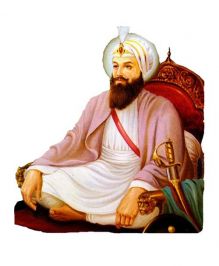
He was the grandson of Guru Har Gobind, born on 31 January 1630. He was appointed as the seventh Guru at the age of 14 years.
He spread the teachings of Guru Nanak Dev and continued his missionary work.
He traveled across various regions to spread the teachings of Sikhism.
Although he was a follower of non-violence, still he continued the military traditions of Guru Har Gobind and always kept ready 2200 mounted soldiers.
He also established 360 Manjhis or missionary seats and improved the corrupted Masand system
Details
8. Guru Har Krishan (1656-1664)
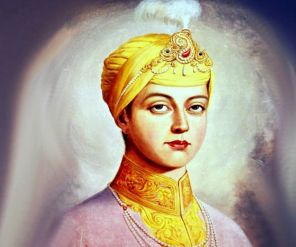
He was born on 23 July 1656 and was appointed as the eighth guru at the tender age of five years.
He emphasized cherishing one god and taught the importance of charity, love, and patience to the devotees.
Guru Har Krishan delightfully recited the hymns to the disciples from Guru Granth Sahib.
He believed in caring for others, thus spending his life healing people suffering from smallpox.
Unfortunately, while healing others, he also contracted smallpox and succumbed because of the disease at the young age of 8 years.
Details
9. Guru Tegh Bahadur (1621-1675)
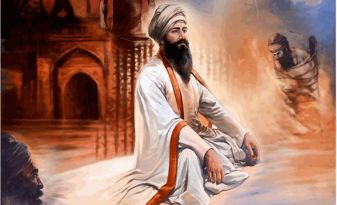
He was born on April 18, 1621. Guru Tegh Bahadur was appointed as the ninth Guru at the age of 23 years.
He was the founder of a town named Anandpur Sahib (City of bliss).
He saved the Kashmiri Pandits from the persecution of the Mughals. He composed 116 shabads and 782 banis.
Guru Tegh Bahadur strongly believed in the right to practice any religion and freedom to worship.
He fought against the forceful conversion of religion. He was martyred when he resisted converting his religion to Islam.
Details
10. Guru Gobind Singh (1666-1708)
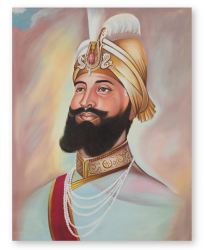
He was born on January 5, 1667, in Patna, Bihar. After the martyrdom of his father, Guru Tegh Bahadur, he was appointed as the tenth Guru at the age of 9 years.
He was the founder of a warrior community called Khalsa Panth for the protection of Sikh soldiers.
Guru Gobind Singh completed the scripture of a sacred book of Sikhism named as Guru Granth Sahib.
He announced Guru Granth Sahib as the next and perpetual Sikh guru. He also introduced 5 K (Kesh, Kanga, kaccha, kara, kirpan).
Details
Conclusion
The 10 guru of Sikhs . preached various teachings including the oneness of God, the importance of celebrations together, the importance of looking after nature, and caring for other beings, defending the right of freedom, equality for women, and the importance of physical health.
All the Sikh gurus enlightened society by giving them clarity and knowledge. All the Sikh gurus were not only humanitarian (helping people) but also chivalry to fight against injustice. They aimed to provide peace to society by caring for others.
They also started a langar system which is followed till date to provide free food to everyone irrespective of their caste, creed, or color. They also took measures to provide equal status to women in society.
Before the last human guru took his last breath, he proclaimed Guru Granth Sahib as the future guru. I hope you liked our article about list of 10 sikh gurus name in order . If you have any comments or suggestions do share them in comments below.
Frequently Asked Question
1. Who were the 10 human Gurus?
Sikhism was established and promoted by the Sikh gurus who believed in the oneness of God and humanity. 10 Human gurus of Sikhism were:
- Guru Nanak Dev
- Guru Angad Dev
- Guru Amar Das
- Guru Ram Das
- Guru Arjan Dev
- Guru Hargobind
- Guru Har Rai
- Guru Har Krishan
- Guru Tegh Bahadur
- Guru Gobind Singh
2. Why is there no 11th guru?
Before his death, Guru Gobind Singh proclaimed Guru Granth Sahib as the 11th or the next guru. This book contains all the teachings of the gurus, this aims at guiding the future generation. Guru Granth Sahib is also considered the word of god.
3. Who is the 9th Teacher of Sikh?
The 9th Guru of Sikhism was Guru Tegh Bahadur who attained guruship at the age of 23 years. He composed many hymns (shabads and slokas) that were introduced in Guru Granth Sahib. He helped the Kashmiri pandits from the Mughals and was publicly executed on the orders of Aurangzeb.
4. Who is the current Sikh Guru?
The current Sukh guru is Guru Granth Sahib. It is a collection of hymns composed by the ten gurus of Sikhism. It is not just a holy book, but it also guides the devotees to follow the religion and practices, thus guiding as a teacher.
Also Read: Check out my reviews of the best image editing software, the top choices for video editing software, and my full guide to start a blog for beginners.


